Related Research Articles

The Governor of Hong Kong was the representative in Hong Kong of the British Crown from 1843 to 1997. In this capacity, the governor was president of the Executive Council and Commander-in-Chief of the British Forces Overseas Hong Kong. The governor's roles were defined in the Hong Kong Letters Patent and Royal Instructions. Upon the end of British rule and the transfer of Hong Kong to the People's Republic of China in 1997, most of the civil functions of this office went to the Chief Executive of Hong Kong, and military functions went to the Commander of the People's Liberation Army Hong Kong Garrison.

Green Island is an island off the northwest coast of Kennedy Town, Hong Kong Island, separated by the Sulphur Channel. A smaller island nearby to the east, uninhabited, is called Little Green Island (小青洲). Administratively, the two islands are part of Central and Western District.
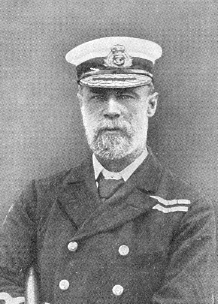
Admiral of the Fleet Sir Arthur Knyvet Wilson, 3rd Baronet was a Royal Navy officer. He served in the Anglo-Egyptian War and then the Mahdist War being awarded the Victoria Cross during the Battle of El Teb in February 1884. He went on to command a battleship, the torpedo school HMS Vernon and then another battleship before taking charge of the Experimental Torpedo Squadron. He later commanded the Channel Fleet. He briefly served as First Sea Lord but in that role he "was abrasive, inarticulate, and autocratic" and was really only selected as Admiral Fisher's successor because he was a supporter of Fisher's reforms. Wilson survived for even less time than was intended by the stop-gap nature of his appointment because of his opposition to the establishment of a Naval Staff. Appointed an advisor at the start of World War I, he advocated offensive schemes in the North Sea including the capture of Heligoland and was an early proponent of the development and use of submarines in the Royal Navy.
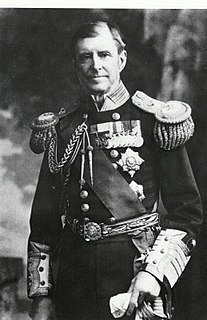
Admiral of the Fleet Sir John Edmund Commerell, was a Royal Navy officer. As a junior officer, he was present at the Battle of Vuelta de Obligado in November 1845 during the Uruguayan Civil War. He also took part in operations in Sea of Azov during the Crimean War and went ashore with the quartermaster and a seaman, to destroy large quantities of enemy forage on the shore. After a difficult and dangerous journey they reached their objective – a magazine of corn – and managed to ignite the stacks, but the guards were alerted and immediately opened fire and gave chase. The men had difficulty in escaping, but they finally reached their ship and the lookouts later reported that the forage store had burned to the ground. He and his colleague, Quartermaster William Thomas Rickard, were awarded the Victoria Cross, the highest award for gallantry in the face of the enemy that can be awarded to British and Commonwealth forces.

Sir Catchick Paul Chater was a prominent British-Indian businessman of Armenian descent in colonial Hong Kong, whose family roots were in Calcutta.

Sir Cecil Clementi was a British colonial administrator who served as Governor of Hong Kong from 1925–30, and Governor and Commander-in-Chief of the Straits Settlements from 1930–34.

Cape D'Aguilar, or Hok Tsui, is a cape in the south of Shek O and D'Aguilar Peak on southeastern Hong Kong Island, Hong Kong. The peninsula, where the cape is on its southeastern side, is also known as Cape D'Aguilar. It is named after Major-General George Charles D'Aguilar.
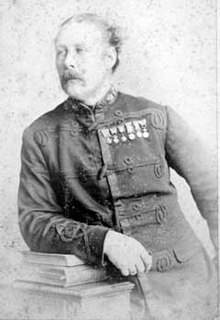
General Sir William Gordon Cameron was a British soldier and colonial administrator.

Major-General Sir George Charles d'Aguilar, ; January 1784 – 21 May 1855), was a British Army officer who served as Lieutenant Governor of Hong Kong (1843–1848).

A Royal Naval Hospital (RNH) was a hospital operated by the British Royal Navy for the care and treatment of sick and injured naval personnel. A network of these establishments were situated across the globe to suit British interests. They were part of the Royal Naval Medical Service.

Sir William Matthews was a British civil engineer.
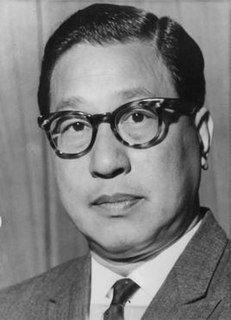
Sir Yuet-keung Kan, was a Hong Kong banker, politician and lawyer who was successively appointed Senior Unofficial Member of the Legislative Council and Executive Council in the 1960s and 1970s. He also served as chairman of the Bank of East Asia for 20 years.
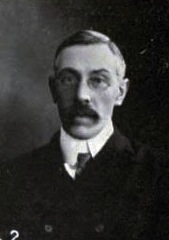
Sir Henry Edward Pollock, QC, JP was an English barrister who became a prominent politician in Hong Kong. He acted as Attorney General in Hong Kong on several occasions, and was once appointed to the same post in Fiji. He also served as Senior Unofficial Member of both the Legislative Council and Executive Council for many years in pre-Pacific War Hong Kong. Along with Sir Paul Chater, then Governor Sir Frederick Lugard and others, Sir Henry was one of the founders of the University of Hong Kong.
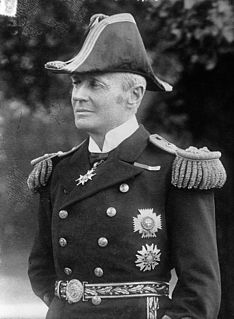
Admiral of the Fleet Sir Arthur Dalrymple Fanshawe, was a Royal Navy officer. As a captain he became commanding officer, successively, of the troopships HMS Jumna and HMS Malabar, which were tasked with ferrying troops between the United Kingdom and India. These were difficult commands with regular disputes between the military officers in charge of the troops and the naval officers in command of the ships.
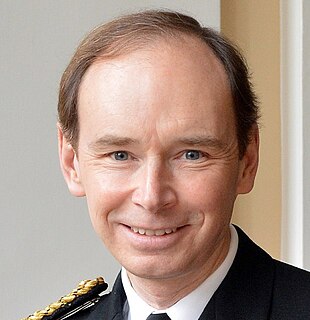
Vice Admiral Sir David George Steel, is a retired senior Royal Navy officer who served as Second Sea Lord from 2012 to 2015.

Sir John Bramston,, was a politician in Queensland and a British colonial government administrator in Queensland and Hong Kong. He then served as Assistant Under-Secretary of State for the Colonies in London for 20 years.
John Joseph Francis KC was a senior counsel in British Colony of Hong Kong and the first elected member of the Sanitary Board.

Sir Joseph Horsford Kemp CBE KC (1874-1950) was a British lawyer and judge. He served as Attorney General and Chief Justice of Hong Kong in the early 1930s.
Warren Delabere Barnes was a British colonial administrator. He was a member of the Malayan Civil Service from 1888 to 1910 and was Colonial Secretary of Hong Kong during five months in 1911, until his sudden death.
William Pedder was a lieutenant in the British Navy who was the fourth person appointed, under the first two Chief Superintendents, for the administration of the Government of Hong Kong and its second legal officer. He was Hong Kong's first Harbour Master and Marine Magistrate.
References
- ↑ "THE STATIONS OF THE ROYAL NAVY IN 1860". History in Portsmouth. Archived from the original on 9 August 2014.
- 1 2 3 "Obituary." Times [London, England] 28 Jan. 1892: 6. The Times Digital Archive. Web. 9 Aug. 2014.
- ↑ "Cape D'Aguilar Lighthouse gazetted as historical building". Leisure and Cultural Services Department. 30 December 2005. Archived from the original on 9 August 2014.
- ↑ Extract form Hongkong Government Gazette of 3rd January 1874. p. 65.
- ↑ "Letters to local correspondents". Jardine Matheson Archive.
- ↑ "No. 25748". The London Gazette . 18 October 1887. p. 5598.
| Government offices | ||
|---|---|---|
| Preceded by Andrew Lysaght Inglis | Harbour Master of Hong Kong 1861–1888 | Succeeded by Robert Murray Rumsey |